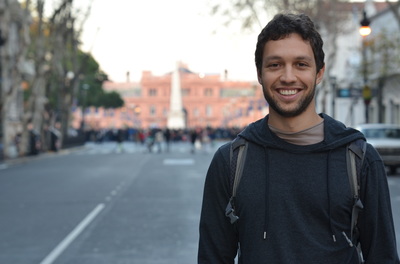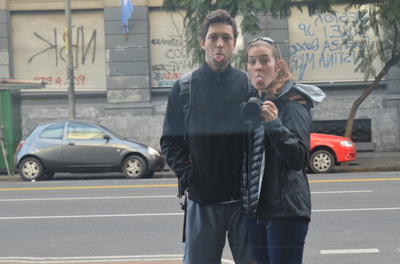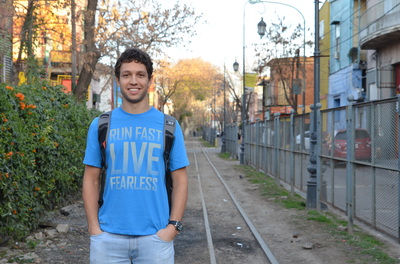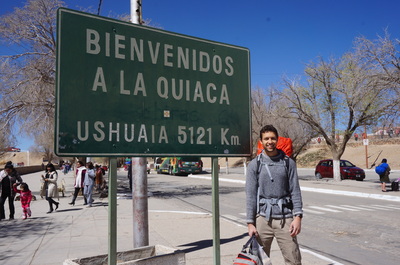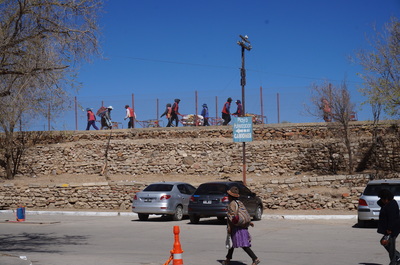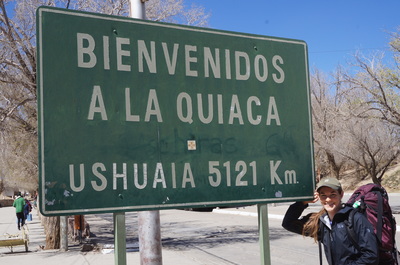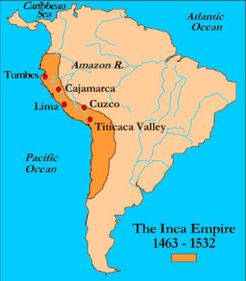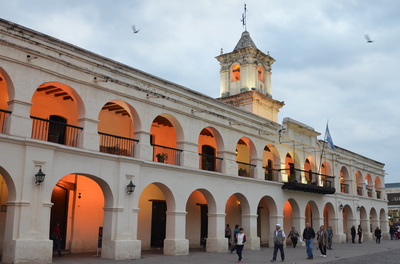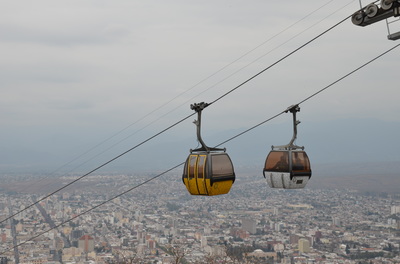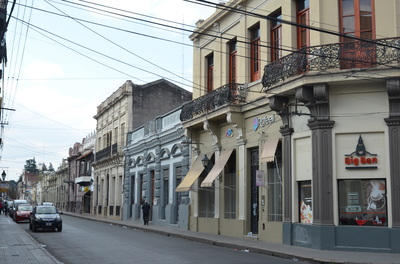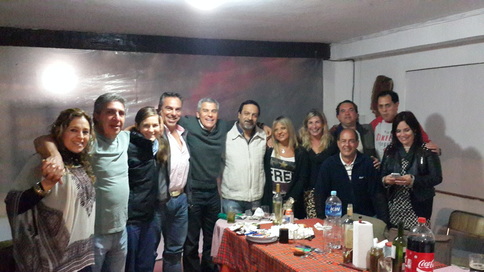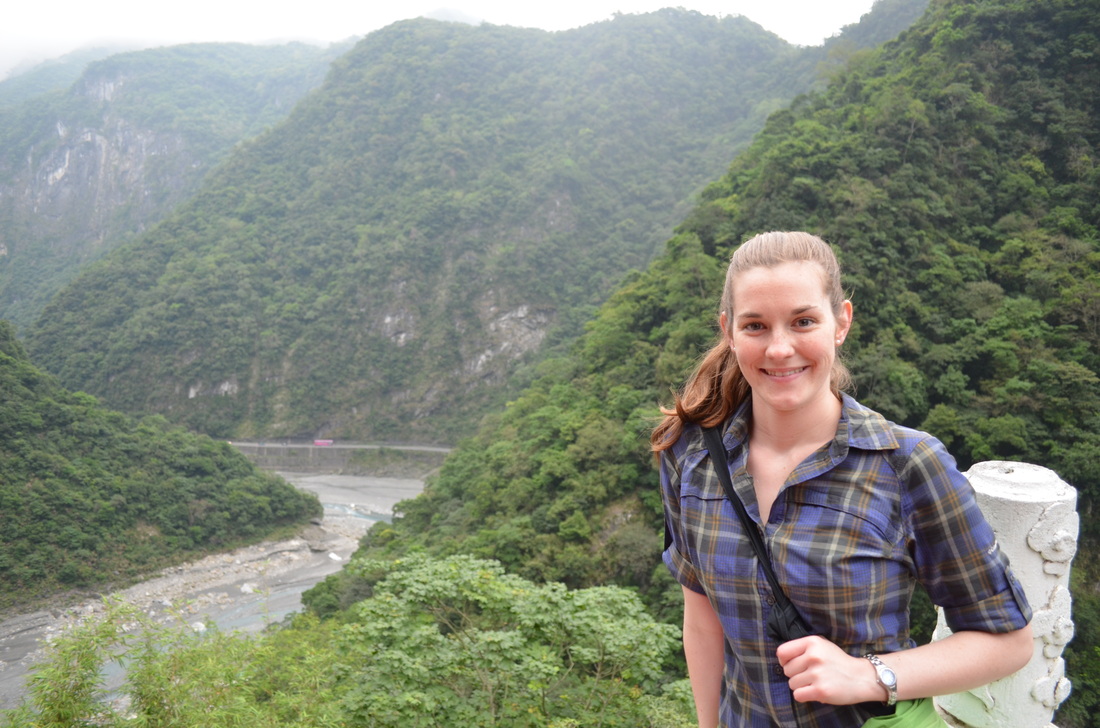One piece of advice I plan on sharing with my kids is when traveling always look up reviews of bus companies if possible. We did not follow this advice and ended up smashed in a minivan cuddling with 13 Bolivians also headed for Lake Titicaca. We had been told it was only a few hours. No it wasn’t a few hours. What people neglect to tell you is that the road between La Paz and Lake Titicaca isn’t paved. At the time of this writing a section of the road is under construction, but who knows when it will be completed. The bar dividing the front seat and the passengers came unbolted and slammed into my knees, the driver decided to pass traffic on the left hand side of the road almost crashing into oncoming traffic, and Nico’s seat was at a permanent 15 degree incline. At one point we had to get out of the van and get into a small boat to cross to the island that Copacabana is on. Our van creaked its way onto a not so seaworthy ferry and lurched across the water. It made it, but the whole process is definitely absurd.
Lake Titicaca is at 3,841 m, making it the highest navigable lake in the world. The main town on the lake is Copacabana (about 7 km from the Peruvian border). With its population of 6,000 it is a small and relaxed place. It has a nicely kept main square and is home to the Basilica of Our Lady of Copacabana (patron saint of Bolivia). The cathedral is a large white stucco structure with beautifully tiled domes. Other than visiting the cathedral/main square the main activities in town are climbing up two hills to take in the stunning vistas from the viewpoints. One viewpoint even was the site where Incan astrologers came to analyze the stars.
Before 1534, the town and lake were under Incan rule. The lake and its islands are/were considered sacred. On the Isla del Sol there are still remains of a Pre-Incan temple, which the Incans used for their own sacred ceremonies. We did the two hour boat ride to the lake and were amazed by how slow we went. Nico’s running watch measured our speed to be around 12 km an hour. We asked if there was a speed limit for environmental reasons or if the boats just suck. The boats just suck. The captain of the boat is originally from la Isla del Sol and has only been speaking Spanish for the past 3 years to make money from tourism. Some people on the island still only speak their indigenous language. He said that before 2005 there were very few tourists and that the sight of white foreigners scared him a bit. He told us that people on the island never get sick. They only experience cold and hunger. The spirits of the lake keep them strong and healthy.
Once on the island we hiked up to see the Pre-Incan temple. There was a large rock we were informed to lean against in order to change our energy (that is literally the only instruction we were given). I was still sick, so I opted out of the three hour hike along the spine of the island. On the way Nico met an American named Roger. He is taking a semester off from Middlebury College to travel around South America. We ended up spending the evening with him and it was so refreshing being with one of my people. I love meeting people from other countries, but sometimes it is nice to talk about college basketball, American politics, and why a lot of us just don’t like Texas. We laughed until late evening at our favorite restaurant in town the Thai Palace (Indian+Thai+Japanese food= an odd, but delicious mix). A Swiss woman and a German woman we met while watching the sunset over the lake ended up joining us as well.
I was given a lot of conflicting advice on whether or not to stay the night on la Isla del Sol. In my opinion, it is worth a one night stay. Give yourself some time to explore the island without the time pressure of catching the boat back to Copacabana.
Leaving the town proved to be just as interesting as reaching it. The taxi drivers decided to go on strike and to barricade the roads thus making the already painful trip even more uncomfortable. We made it back to La Paz though tired and ready to leave Bolivia.
Lake Titicaca is at 3,841 m, making it the highest navigable lake in the world. The main town on the lake is Copacabana (about 7 km from the Peruvian border). With its population of 6,000 it is a small and relaxed place. It has a nicely kept main square and is home to the Basilica of Our Lady of Copacabana (patron saint of Bolivia). The cathedral is a large white stucco structure with beautifully tiled domes. Other than visiting the cathedral/main square the main activities in town are climbing up two hills to take in the stunning vistas from the viewpoints. One viewpoint even was the site where Incan astrologers came to analyze the stars.
Before 1534, the town and lake were under Incan rule. The lake and its islands are/were considered sacred. On the Isla del Sol there are still remains of a Pre-Incan temple, which the Incans used for their own sacred ceremonies. We did the two hour boat ride to the lake and were amazed by how slow we went. Nico’s running watch measured our speed to be around 12 km an hour. We asked if there was a speed limit for environmental reasons or if the boats just suck. The boats just suck. The captain of the boat is originally from la Isla del Sol and has only been speaking Spanish for the past 3 years to make money from tourism. Some people on the island still only speak their indigenous language. He said that before 2005 there were very few tourists and that the sight of white foreigners scared him a bit. He told us that people on the island never get sick. They only experience cold and hunger. The spirits of the lake keep them strong and healthy.
Once on the island we hiked up to see the Pre-Incan temple. There was a large rock we were informed to lean against in order to change our energy (that is literally the only instruction we were given). I was still sick, so I opted out of the three hour hike along the spine of the island. On the way Nico met an American named Roger. He is taking a semester off from Middlebury College to travel around South America. We ended up spending the evening with him and it was so refreshing being with one of my people. I love meeting people from other countries, but sometimes it is nice to talk about college basketball, American politics, and why a lot of us just don’t like Texas. We laughed until late evening at our favorite restaurant in town the Thai Palace (Indian+Thai+Japanese food= an odd, but delicious mix). A Swiss woman and a German woman we met while watching the sunset over the lake ended up joining us as well.
I was given a lot of conflicting advice on whether or not to stay the night on la Isla del Sol. In my opinion, it is worth a one night stay. Give yourself some time to explore the island without the time pressure of catching the boat back to Copacabana.
Leaving the town proved to be just as interesting as reaching it. The taxi drivers decided to go on strike and to barricade the roads thus making the already painful trip even more uncomfortable. We made it back to La Paz though tired and ready to leave Bolivia.
